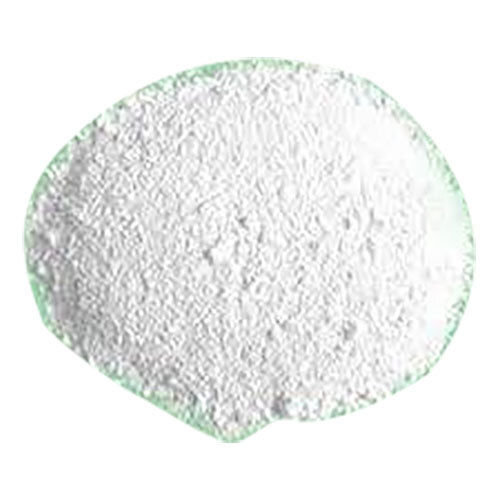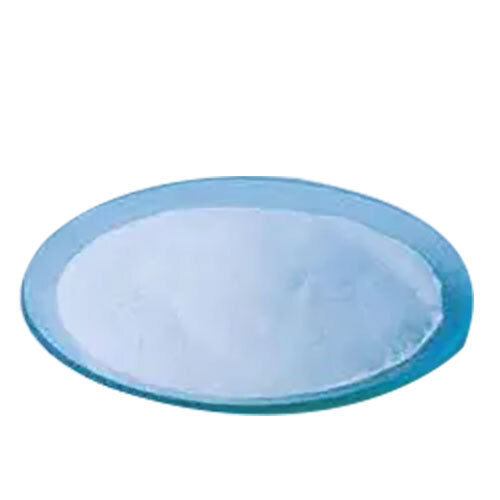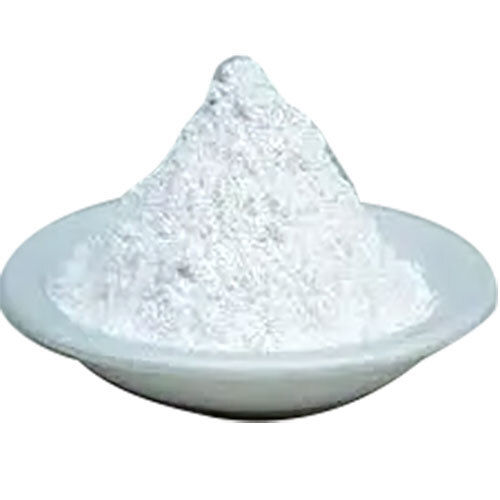
Aluminium Oxide
Product Details:
- Grade Industrial Grade
- Density 3.99 Gram per cubic centimeter(g/cm3)
- Shelf Life 12 Months
- Purity 99%
- Physical Form Powder
- Molecular Formula Al2O3
- Application Industrial
- Click to view more
X
Aluminium Oxide Price And Quantity
- 1000 Kilograms
Aluminium Oxide Product Specifications
- Water
- 1344-28-1
- Powder
- 99%
- Room Temperature
- 2,072 C
- 12 Months
- Industrial
- 3.99 Gram per cubic centimeter(g/cm3)
- Al2O3
- Industrial Grade
Aluminium Oxide Trade Information
- 100 Kilograms Per Day
- 1 Days
Product Description
Aluminium oxide, also known as alumina, is a chemical compound with the formula Al2O3. It is a white or nearly colorless crystalline substance that occurs in various forms, including as the mineral corundum. Here are some key points about aluminium oxide:
Aluminium Oxide Properties:
1. Physical Properties:
Color: Pure aluminium oxide is typically white or colorless, but impurities can give it various colors.
Hardness: Aluminium oxide, particularly in the form of corundum, is one of the hardest known materials. This makes it suitable for use in abrasive applications.
Melting Point: The melting point of aluminium oxide is high, around 2,072 degrees Celsius (3,762 degrees Fahrenheit).
Density: The density of aluminium oxide varies depending on its form and purity. Generally, it has a density of about 3.97 grams per cubic centimeter.
2. Crystal Structure:
Aluminium oxide exists in several crystalline forms. The most stable form is corundum, which has a hexagonal close-packed crystal structure.
3. Chemical Properties:
Amphoteric Nature: Aluminium oxide is amphoteric, meaning it can exhibit both acidic and basic properties. It reacts with acids to form salts and with bases to form aluminates.
Chemical Inertness: Aluminium oxide is chemically inert under most conditions, making it resistant to corrosion.
4. Thermal Properties:
High Thermal Conductivity: Aluminium oxide has relatively high thermal conductivity, contributing to its use in various high-temperature applications.
High Melting Point: Its high melting point makes aluminium oxide suitable for applications in high-temperature environments, such as refractories.
5. Electrical Properties:
Insulating Properties: Aluminium oxide is an electrical insulator, and it is commonly used in the production of insulating materials, such as electrical insulators and ceramic components.
6. Abrasive Properties:
Abrasive Hardness: Its hardness makes aluminium oxide an excellent abrasive material. It is widely used in the production of abrasives like sandpaper and grinding wheels.
7. Transparency:
In its transparent crystalline forms, such as sapphire, aluminium oxide can be used for optical applications, including the production of gemstones and certain types of windows.
8. Hygroscopicity:
Aluminium oxide is generally not hygroscopic, meaning it does not readily absorb moisture from the air.
9. Biocompatibility:
In certain forms, such as high-purity alumina, aluminium oxide is biocompatible and is used in medical applications, including implants and prosthetics.
Applications of Aluminium Oxide:
1. Abrasives: Aluminium oxide is widely used as an abrasive material in the production of sandpaper, grinding wheels, and polishing compounds. Its hardness and durability make it effective in cutting, grinding, and smoothing surfaces.
2. Refractories: Due to its high melting point, aluminium oxide is a crucial component in the manufacturing of refractory materials. Refractories made from alumina are used in the lining of furnaces, kilns, and other high-temperature industrial equipment.
3. Ceramics: Alumina is a common ingredient in the production of ceramics. It is used to manufacture items such as electrical insulators, spark plug insulators, and ceramic components for various applications.
4. Catalyst Supports: Aluminium oxide serves as a catalyst support material in various chemical processes. It provides a stable and inert surface for catalysts to enhance chemical reactions.
5. Polishing Compounds: In addition to abrasives, aluminium oxide is used in polishing compounds for applications such as metal polishing and lens polishing.
6. Gemstones: Gemstones such as rubies and sapphires are forms of corundum, a crystalline variety of aluminium oxide. These gemstones are valued for their hardness, brilliance, and color.
7. Medical Implants: High-purity alumina, a form of aluminium oxide, is used in the production of medical implants and prosthetics due to its biocompatibility and resistance to corrosion.
8. Electrical Insulators: Aluminium oxide is employed in the manufacture of electrical insulators and components due to its insulating properties. It is used in high-voltage applications where electrical insulation is critical.
9. Coatings and Films: Thin films of aluminium oxide can be applied to surfaces for protective coatings. These coatings provide resistance to corrosion and wear, making them useful in various industrial applications.
10. Heat Sinks: Aluminium oxide is sometimes used as a component in heat sinks to dissipate heat in electronic devices. Its thermal conductivity helps in managing and dispersing heat efficiently.
11. Chemical Industry: It is utilized in the chemical industry for various purposes, including as a catalyst support, as an adsorbent in chromatography, and in the production of chemicals.
12. Optical Applications: Transparent forms of aluminium oxide, such as sapphire, are used in optical applications. Sapphire is employed in the manufacturing of watch crystals, lenses, and other optical components.
13. Environmental Applications: Aluminium oxide is employed in water treatment processes as a filter medium due to its porous structure. It can help remove impurities and particles from water.
Aluminium Oxide FAQ:
Q. What is Aluminium Oxide?
Ans: Aluminium oxide (Al2O3), also known as alumina, is a chemical compound consisting of aluminum and oxygen. It occurs naturally in various forms, including the mineral corundum.
Q. What are the Properties of Aluminium Oxide?
Ans: Aluminium oxide is known for its hardness, high melting point, chemical inertness, amphoteric nature, thermal conductivity, and diverse crystalline forms. It is often used in abrasive applications, refractories, ceramics, and more.
Q. How is Aluminium Oxide Produced?
Ans: Aluminium oxide can be produced through various methods, with one common method being the Bayer process, which involves extracting alumina from bauxite ore. It can also be produced through combustion of aluminum powder and other processes.
Q. What are the Applications of Aluminium Oxide?
Ans: Aluminium oxide is used in a wide range of applications, including abrasives (sandpaper, grinding wheels), refractories, ceramics, catalyst supports, polishing compounds, gemstones, medical implants, electrical insulators, coatings, heat sinks, and more.
Q. Is Aluminium Oxide Safe?
Ans: In general, aluminium oxide is considered safe for most applications. However, inhaling fine particles of aluminium oxide dust may pose respiratory health risks. Proper precautions should be taken when handling it in powder form.
Q. What is the Difference Between Aluminium Oxide and Aluminum?
Ans: Aluminium oxide is a compound containing aluminum and oxygen, while aluminum (in the context of the metal) refers to the pure metallic element. It is a common component of bauxite, which is the primary ore for aluminum metal.
Q. Is Aluminium Oxide the Same as Alumina?
Ans: Yes, aluminium oxide is commonly referred to as alumina. The terms are often used interchangeably in the context of this compound.
Q. What is the Crystal Structure of Aluminium Oxide?
Ans: The most stable crystal structure of aluminium oxide is hexagonal close-packed, as seen in corundum. The crystal structure may vary depending on the specific form of alumina.
Q. Why is Aluminium Oxide Used in Abrasives?
Ans: Aluminium oxide's hardness makes it an excellent abrasive material. It is used in abrasives like sandpaper and grinding wheels for cutting, grinding, and smoothing surfaces.
Q. Can Aluminium Oxide Conduct Electricity?
Ans: Aluminium oxide is an electrical insulator. It does not conduct electricity under normal conditions.
Q. What are Transparent Forms of Aluminium Oxide Used For?
Ans: Transparent forms of aluminium oxide, such as sapphire, are used in optical applications. Sapphire is utilized in the production of watch crystals, lenses, and other optical components.
Q. Is Aluminium Oxide Used in Environmental Applications?
Ans: Yes, aluminium oxide is used in water treatment processes as a filter medium due to its porous structure. It can assist in removing impurities and particles from water.
Enter Buying Requirement Details



